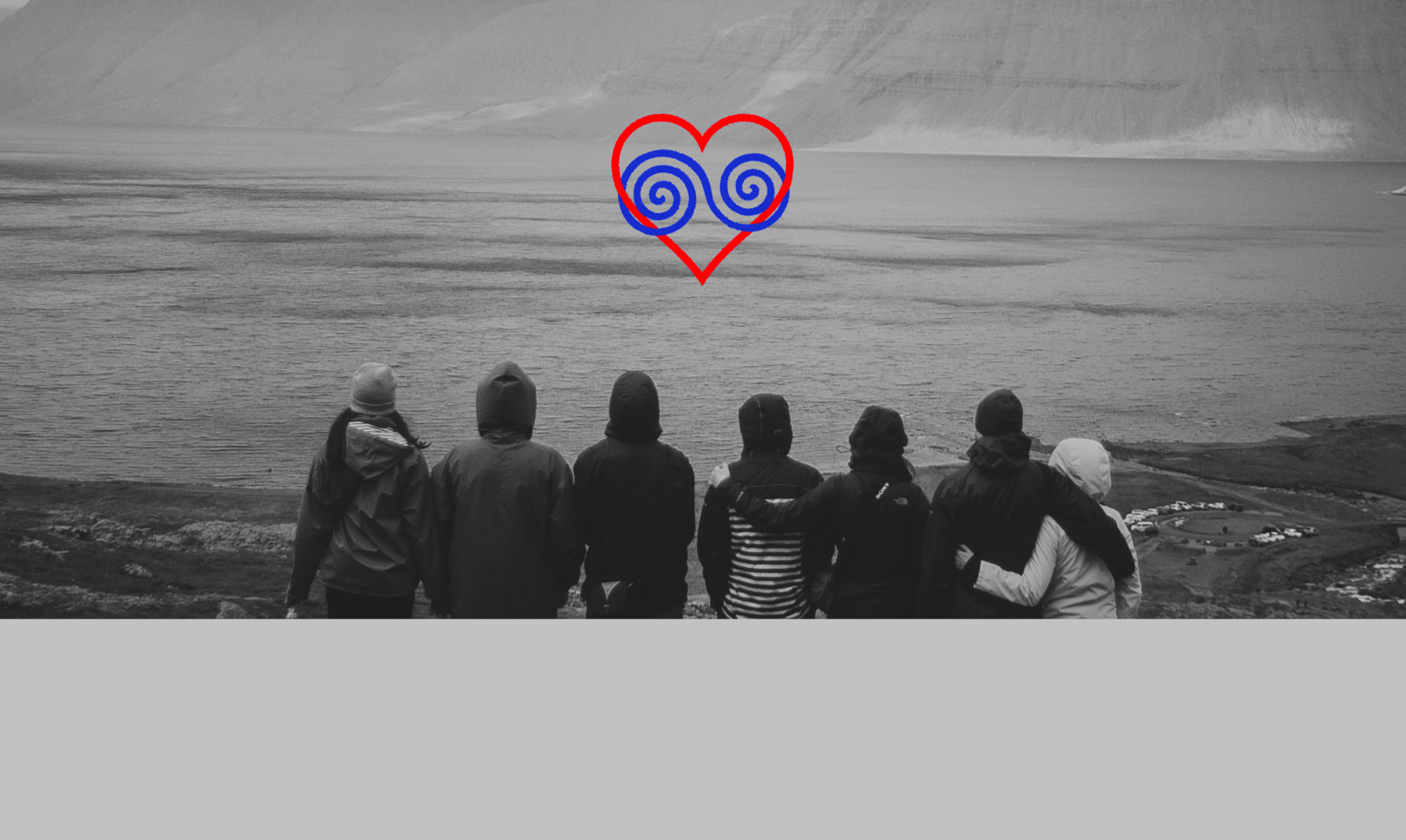Meaningful Relationships (Part 1)
»Everybody wants to be loved – nobody wants to get hurt. But you can’t have one without risking the other.«
[quote from the character “Cleo” (portrayed by Riann Steele) in the British sitcom “Lovesick“]

The first time I took note of the phrase “meaningful relationships” in the context of ethical non-monogamy was in the by now widely available Polyamory guidebook “More Than Two¹“ by Franklin Veaux and Eve Rickert. In their comprehensive work, the two authors call for efforts to establish “meaningful relationships” wherever possible. “Meaningful” in this context encompasses “sense-giving”, “significant” and “relevant”.
What F. Veaux and E. Rickert consider in their view as the most important aspect of “meaningful” they define in the middle of their book, where they expand it with the term “empowered relationships”:
»People who are empowered in their romantic relationships can express needs and ask for them to be met. They can talk about problems. They can say what works for them and expect that their partners will try to accommodate their needs as much as they can. It’s not possible to make a person feel empowered, just as it’s not possible to make a person feel secure. The best we can hope to do is to create an environment that welcomes participation and encourages empowerment.[…]
Non-Monogamous relationships often highlight the gap between our perception of our power and the reality of our power. It is often easier to see someone else’s power than to see our own. If our partner begins a new relationship, we might see how he invests in the new relationship, and we feel powerless – without recognizing how the established structures, history, commitments and shared life experience in our already existing relationship give us a tremendous amount of power.
Without this strong internal sense of trust, security and worthiness, we will find it nearly impossible to be aware of our power in our relationships. When we feel unworthy, we feel disconnected.[…]
Empowered relationships rely on trust. Trust your partner to want to cherish and support you. Trust that if you make your needs known, your partner will want to meet your needs. This requires courage. Building relationships on a shared understanding of needs means having the courage to stand in the face of a negative emotion an d ask, “What is this feeling telling me? Is there a need that is not being met? Is there something I can do to enlist my partner as my ally in dealing with this?” If you’re the person whose partner is experiencing emotional hardship, it can be tempting to read this chapter as a way of saying “You have the responsibility to deal with your own emotions, so I don’t want you putting restrictions on me.” That is partly true, in the sense that you can’t solve someone else’s problems for them, and if your partner places restrictions on your behavior, those restrictions rarely resolve the underlying issue. But it’s a mistake to put what Douglas Adams calls a “Somebody Else’s Problem Field²” around a partner’s distress. If you care, you will help. Behaving with compassion means working together to overcome relationship issues. That’s how relationships become strong and healthy.[…] Resiliency in the face of adversity is a powerful tool for building happy relationships.«
Strictly speaking, Veaux and Rickert’s preceding text describes what the scientists S. Cohen, L. Underwood, and B. Gottlieb emphasized in their “Guide concerning social support measurement and intervention” (first cited by me in Entry 14):
“Thus, intimacy is a cardinal process, defined as feeling understood, validated and cared for by partners who are aware of facts and feelings central to one’s self-conception.
Contributing to this perception is trust (the expectation that partners can be counted on to respect and fulfil important needs) and acceptance (the belief that partners accept one for who one is).
Empathy is also relevant because it signals awareness of an appreciation for a partners core-self.
Attachment also contributes to perceived partner responsiveness, notwithstanding its link to interdependence and sentiment, because of the fundamental role of perceiving that one is worthy of and can expect to receive love and care from significant others.”
With regard to all the above statements, “the door”, as the witty saying goes, “swings in two directions” – and I have already dedicated a separate bLog-Entry to both of those “directions”:
In Entry 46 I first made it clear that – as Veaux and Rickert also describe – we ourselves are first invited to explore and get to know our “core self” so that we can develop a good understanding of our own self-worth in the first place.
And in Entry 53 I describe how important it is for us humans – especially as participants in a (loving) relationship – to be “considered” by the other participants. All the relationship experts cited above agree that a trusting relationship is fundamental for this, which enables both a positive climate for the expression of self-efficacy and the experience of “being-perceived-and-respected-in-this-self-efficacy”. Finally, this form of perceived self-efficacy is crowned by the all-round contribution to the striving for identity, life design and meaning that is expressed in this way by each participating individual.
Only in this way, however, do the essential supra-personal common identity, a vision for co-existence and a sense of community emerge for a relationship at the same time – and rather in a version in which all participants can perceive themselves and in which they can therefore accept themselves and the others in a benevolent way.
From here, it is only a small step to realize that this “bundle solution” can only be obtained as an inseparable comprehensive package, which is why it only works holistically. Because, to quote myself from my Holism-Entry 57 »’Holistic’ is every request, every thought, every action, if the resulting process benefits as many participants as possible (or even better: all!), who are involved in the process.«
However, in order to really be able to do this, we have to train – besides self-acknowledgement and considerations about others – another incredibly important characteristic that has always been shimmering in the background on my bLog (e.g. in Entry 33), namely “ambiguity tolerance“. In view of global crises and widening social gaps, this edgy expression is currently being discussed more frequently these days –since “ambiguity tolerance” simply means that individuals are able to view unfamiliar stimuli in a neutral or open way. Ambiguity-tolerant persons are able to perceive ambiguities, i.e. contradictions, culturally conditioned differences or strange information that appears difficult or incomprehensible to understand without reacting immediately aggressively or evaluating it one-sidedly biased.
Thus, “ambiguity tolerance” is presently a rare, yet highly sought-after commodity. And that’s no wonder, since we as “children of a Reality of Separation” (see Entry 26) reflexively tend to judge others and to “declare ourselves as separate from something” due to our habitual automatisms. And, unfortunately, both in terms of “the others” as well as in terms of possibly contradictory or unconsolidated parts of our core self³. Which is precisely how we usually block our way to sustainable relationship conduct, which, as the psychologist and community researcher Scott Peck pointed out, intends to be based on tolerance and integration: »Community, togetherness and loving relationships require it that we hold on a bit when things get uncomfortable. All of it requires a certain amount of commitment. Our individualism must be balanced by commitment. […] Perhaps the most important key to achieving this goal is recognising differences.«
I have already quoted this text passage in Entry 33, the Entry in which I also mention a song by the singer/songwriter ‘Alice im Griff’. Her song shows for me rather distinctively where self-denial (dating an AfD-voter) verges ambiguity tolerance (allowing an omnivore eater his meat dish) on a personal level. Ambiguity tolerance, with Scott Peck’s famous integrative phrasing of the crucial question “Why not?” has in a sense to be our everyday “bread and butter” in ethical multiple relationships – especially when following an oligoamorous model. Precisely because we can very quickly put ourselves at the “other side” of that question when it comes to “imposing ourselves” – and thus for the other participants to “endure ourselves”. I describe this correlation in detail in Entry 43, at the end of which I summarize »Without the ‘imposition’ that we all probably occasionally are for our familiar group in this way, we also couldn’t become their hero and sources of all-round well-being the next time or the day after. To be human, to be with each other, means to accept both occurences regularly – in respect of us as well as in respect of the other participants.«
Nevertheless, we still often have a hard time with the emotional burden of impositions and endurance – so that we regularly still take refuge in (artificial) separation³, hoping that “all of that” has as little to do with us as possible. But at the same time this also immediately robs us of our ability to empathize and to change our perspective empathetically. And what was the wording of Gandhi in Entry 54?: »You and I are one: I cannot hurt you without hurting myself.«…
Our recurring flight into separation is thus, with regard to the holistic “we”, more or less as if we ourselves were to cut off an arm or a leg: Always painful and dramatically disabling.
We should no longer do this to ourselves. And “ourselves” I consider at this point in a global, almost transpersonal sense. Because separation is artificial, it has to be, since it is always only a rather deficient shelter when in our fear or similar distress we no longer know where to put ourselves.
Unity, connectedness is our actual and natural state (see also Jean Liedloff in Entry 26), our genuine, whole and healthy state.
In his brilliant work “Cloud Atlas“, the author David Mitchell makes one of his main characters realize:
»All boundaries are conventions, waiting to be transcended. One may transcend any convention, if only one can first conceive of doing so. Moments like this, I can feel your heart beating as clearly as I feel my own, and I know that separation is an illusion. My life extends far beyond the limitations of me.«
With our step into the world of ethical non-monogamy, if it really has earned this term, we have already overcome many conventions.
And by beginning to think of our human connections holistically, we can refrain from separative categories in relational matters such as “friends”, “acquaintances”, “family”, “loved ones” for the purpose of no longer limiting our emotional expression or experiential possibilities.
Oligoamor it becomes, if we strive therein with our quality management to follow fundamental ethics encompassing all times and many cultures; ethics, which Immanuel Kant once described in 1785 in his “Groundwork of the Metaphysic of Morals“ as follows (and which exists however in many other forms world-wide):
»Act in such a way that you utilize humanity both in your person and in the person of everyone else at any time as an end (=goal), never merely as a means (=tool/method).«
The centuries-old Buddhist and Hindu Dharma teachings state it even more compactly:
»Do not harm anything or anyone – not even yourself.«
And F.Veaux and E. Rickert concretize:
»Cherish your partners. Cherish yourself. Trust your partners. Be trustworthy. Honor other’s feelings and your own. Seek joy for everyone involved.
Own your shit. Admit when you fuck up. Forgive when others fuck up. Don’t try to find people to stuff into the empty spaces in your life; instead, make space for the people in your life. If you need a relationship to complete you, get a dog.«
I couldn’t say it any better.
¹ Franklin Veaux & Eve Rickert: “More Than Two – A practical guide to ethical polyamory”; Thorntree Press; 1. Edition (1. September 2014)
² Douglas Adams, “Life, the Universe and Everything“; The Hitchhiker’s Guide to the Galaxy, Book 3; 1982 Serious Productions, Ltd.
³ “Oh, come on, Oligotropos. A little bit of separation or detachment is pretty human and healthy, in order that everything doesn’t dissolve in such a big mush of indifference…”
Is that so? The philosopher Hannah Arendt, whom I quoted for the first time in Entry 39, spent her life dealing with the scientific processing of the phenomenon of how gruesomely mass-murdering Nazi- and concentration camp commanders could at the same time interact with their families in the evening as loving fathers and husbands or even experienced subtle emotions during the tunes of classical violin concerts.
Modern research has revealed that they succeeded in doing so only through a categorical and almost dissociative “situational separation” in their minds, which reached a sad climax during the nationalist world-view of the Third Reich. The fact that this required a social climate of isolationism and divisiveness that had developed over a rather long time, and which is a sad by-product of an occidental-dualistic mindset, is shown, however, by movies such as “The White Ribbon“. This mindset is still part of what is called “Reality of Separation” in Entry 26 to our present day.
Thanks to Tyler Nix on Unsplash for the photo!

